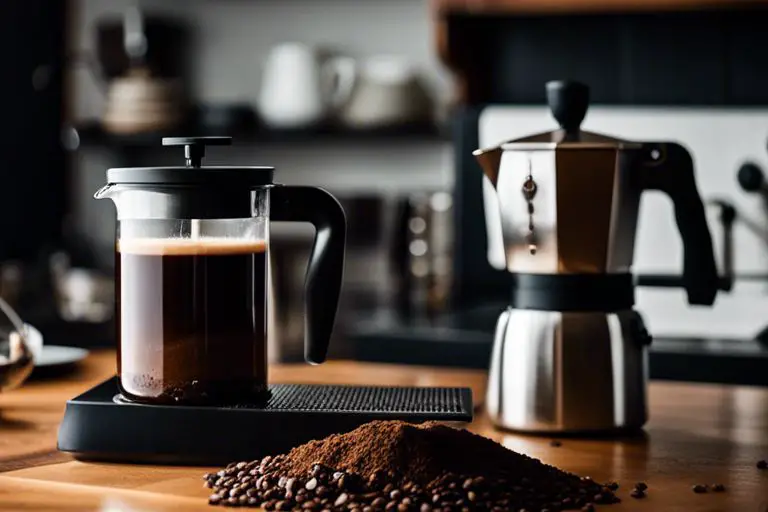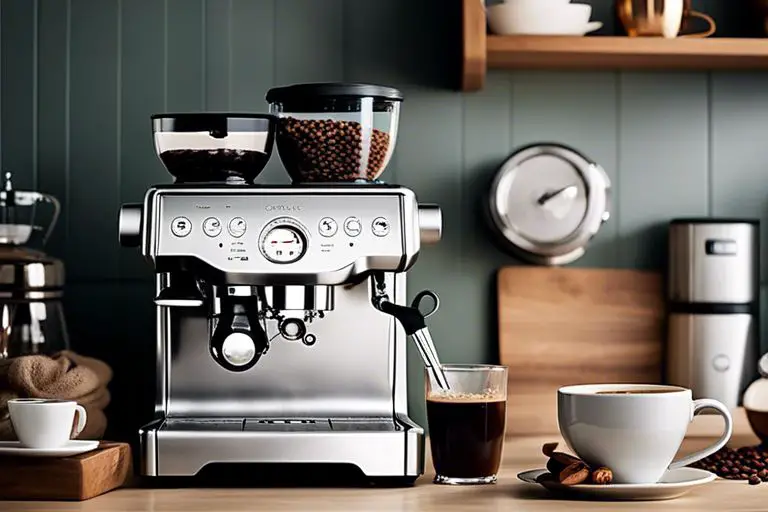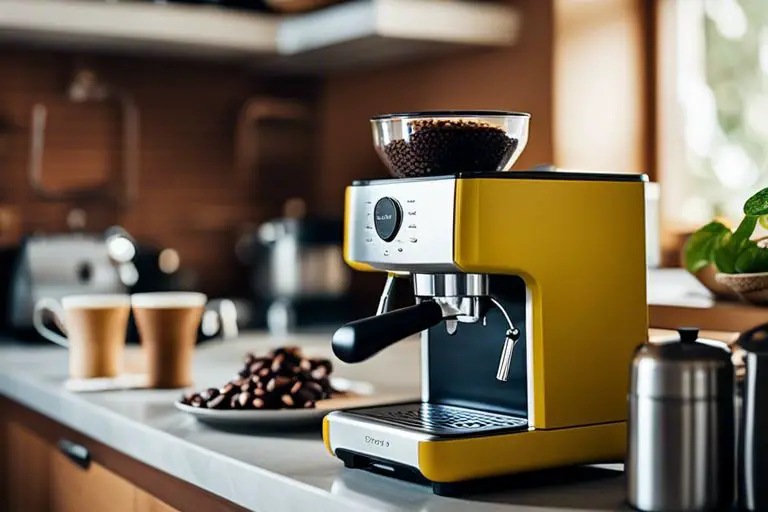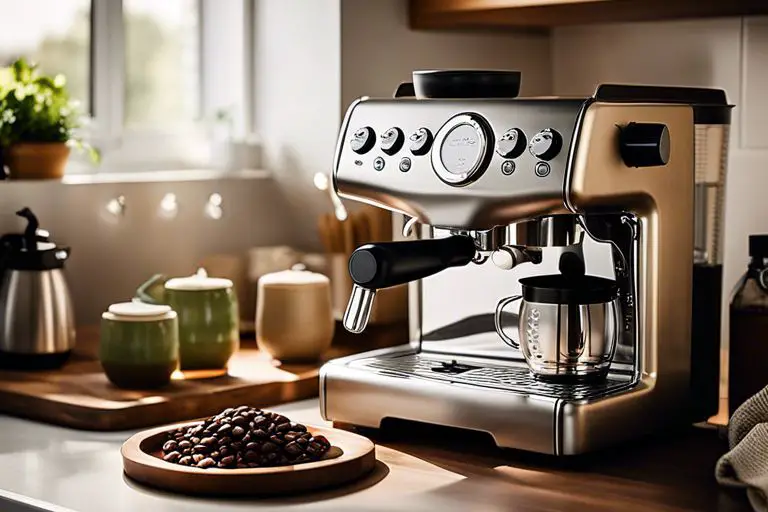Obtaining the optimal coffee grind size for your preferred brewing method is essential in achieving the perfect cup of coffee. With a plethora of coffee grind sizes available, each catering to different brewing methods, it can be confusing to determine the right one for your needs. In this blog post, we will explore the crucial factors to consider when choosing the ideal coffee grind size, and how it can significantly impact the taste and quality of your coffee. From coarse grinds for French press to fine grinds for espresso machines, we will discuss how to match the grind size to your brewing apparatus. By the end of this article, you’ll be equipped with the knowledge to confidently select the right coffee grind size for your individual brewing preferences.“`
Key Takeaways:
- Understanding the importance of grind size: The grind size greatly impacts the flavour and strength of your coffee, so it is crucial to choose the right size for your brewing method.
- Coarse vs fine grind: Different brewing methods require different grind sizes, with coarser grinds suitable for methods like French press and finer grinds for espresso machines.
- Experimentation is key: It may take some trial and error to find the perfect grind size for your taste preferences, so be open to experimenting with different sizes.
- Investing in a good grinder: A quality grinder can make all the difference in achieving the perfect grind size, so consider investing in one for better results.
- Consulting with experts: If unsure about which grind size to use, seek advice from coffee professionals or refer to brewing guides to ensure you make the right choice.
Understanding Coffee Grinds
When it comes to brewing a perfect cup of coffee, the grind size plays a crucial role in the final outcome. Understanding the different grind sizes and their impact on the brewing process is essential for any coffee enthusiast.
The Spectrum of Grind Sizes
The spectrum of coffee grind sizes ranges from extra coarse to extra fine. Coarser grinds are typically used for brewing methods such as French press and cold brew, while finer grinds are more suited for espresso and Turkish coffee. The size of the grind directly affects the rate of extraction, which in turn influences the flavour and strength of the coffee.
Factors Affecting Grind Size Choice
When choosing the right grind size for your brewing method, several factors come into play. First and foremost, the type of coffee maker you are using will determine the ideal grind size. Additionally, the roast level of the coffee beans and the water temperature also impact the grind size.
- Brewing method
- Roast level
- Water temperature
Any deviation in these factors can result in a subpar coffee brewing experience.
When it comes to selecting the right grind size for your coffee, it’s essential to consider the brewing method, roast level, and water temperature. Any discrepancy in these factors could lead to a less than perfect cup of coffee, adversely affecting the overall taste and aroma.
Matching Grind Size to Brewing Methods
Choosing the right grind size for your coffee beans is crucial to achieving the perfect cup of coffee. Different brewing methods require different grind sizes in order to extract the best flavours from the beans. Understanding the relationship between grind size and brewing method is key to unlocking the full potential of your coffee beans.
Espresso
Espresso requires a very fine grind to ensure a strong and concentrated flavour. The fineness of the grind allows for a quick extraction process, resulting in a rich and full-bodied coffee with a layer of crema on top. Using a coarser grind for espresso will result in under-extraction, producing a weak and sour taste.
French Press
The French Press method calls for a coarse grind to prevent the small grounds from seeping through the filter. The larger grind size allows for a slower extraction process, resulting in a rich and bold coffee with a full-bodied flavour and a slightly heavier mouthfeel.
It is important to use a consistent coarse grind to avoid over-extraction, which can lead to a bitter taste in the coffee.
French Press is also known as a press pot, coffee plunger or cafetière.
Pour-Over
Pour-Over coffee requires a medium-coarse grind to allow for a balanced extraction process. The medium-coarse grind size enables water to flow through the grounds at a steady pace, resulting in a clean and bright cup of coffee with clarity of flavour and aromatic complexity.
It is essential to use a consistent medium-coarse grind to achieve optimal extraction without over-extraction, which can lead to a bitter taste in the coffee.
Pour-Over is also referred to as filter coffee or drip coffee.
Drip Coffee
Drip coffee machines require a medium grind to ensure proper extraction of flavour without over-extraction. The medium grind size allows for a balanced flow of water through the grounds, resulting in a smooth and well-balanced cup of coffee.
Using a grind that is too fine can result in over-extraction, while a grind that is too coarse can lead to under-extraction, affecting the overall taste and quality of the coffee.
Drip Coffee is a popular brewing method for households and offices, offering convenience and consistency in brewing.
Aeropress
The Aeropress method calls for a fine to medium grind, depending on the desired strength and extraction time. The flexibility in grind size allows for a range of flavour profiles to be achieved, from a bold and intense cup to a clean and nuanced brew.
Experimenting with different grind sizes can help coffee enthusiasts tailor the flavour of their Aeropress coffee to their preference, whether they enjoy a strong and robust cup or a lighter and more delicate brew.
Cold Brew
Cold brew coffee requires a very coarse grind to ensure a smooth and rich extraction process. The extremely coarse grind size allows for a slow and gentle extraction, resulting in a mellow and well-rounded coffee with low acidity and a sweet finish.
Using a finer grind for cold brew can lead to over-extraction, resulting in a bitter and harsh taste, while a consistent coarse grind produces a refreshing and delightful cold brew.
When it comes to cold brew, patience is key – the slow extraction process allows for the development of a smooth and flavourful coffee concentrate.
Tips for Grinding Coffee at Home
When it comes to brewing the perfect cup of coffee, getting the coffee grind size right is crucial. Here are some tips to help you achieve the perfect grind for your preferred brewing method:
- Invest in a quality coffee grinder to ensure consistency
- Use a coffee grind size chart as a reference guide
- Experiment with different grind sizes to find the perfect balance
This Complete Guide to Coffee Grind Size – The Counter offers a comprehensive resource for understanding the impact of grind size on your coffee brewing.
Selecting a Coffee Grinder
Investing in a coffee grinder is essential for achieving the perfect grind size. Look for a grinder with adjustable settings to cater to different brewing methods. Burr grinders are recommended for their consistency and precision.
Achieving Consistent Grind Size
To achieve a consistent grind size, it’s important to use a reliable grinder and follow a few key practices. Measure your coffee beans before grinding to ensure accuracy, and adjust the grinder settings as needed. Consistency is key to unlocking the full flavour potential of your coffee.
When it comes to achieving a consistent grind size, maintaining the cleanliness of your grinder is crucial. Regularly clean and maintain your grinder to prevent any inconsistencies in the grind size.
Storage and Freshness
Proper storage of your coffee beans is essential to maintain their freshness and flavour. Store your beans in an airtight container in a cool, dark place to protect them from exposure to light, heat, and moisture. Avoid storing them in the refrigerator or freezer, as this can affect the flavour of the coffee.
When it comes to freshness, always ensure you’re using freshly ground coffee for the best results. Grinding the beans just before brewing will preserve the aroma and flavours of the coffee.
Experimenting with Grind Sizes
One of the most exciting parts of brewing coffee at home is experimenting with different grind sizes to find the perfect one for your brewing method. There are various methods for determining the ideal grind size, and a great way to learn is by engaging with the coffee community. Join discussions on platforms like What’s your method for determining grind size? : r/Coffee to gather insights and advice from other coffee enthusiasts.
Fine-tuning Your Coffee Experience
Once you have identified a few potential grind sizes to try, start fine-tuning your coffee experience by making small adjustments to your grind size and noting the differences in the flavour and strength of the brew. This process may require some patience, but it is essential for achieving the perfect cup of coffee that suits your taste preferences.
Remember to use a consistent measurement of coffee and water when making these adjustments to ensure accurate results. Taking notes on the changes you make will help you keep track of the differences in taste, strength, and extraction of the coffee.
Recording Your Coffee Tasting Notes
Recording your coffee tasting notes can be as simple or detailed as you want it to be, but it is a crucial step in your coffee experimentation journey. Whether using a dedicated coffee journal or a note-taking app, jot down the details of each brew, including the grind size, brewing method, water temperature, and the flavours and aromas you experience.
These notes will be invaluable for understanding how grind size affects the taste of your coffee and for making informed decisions about future brewing adjustments.
Choosing the Right Coffee Grind Size for Your Brewing Method
Ultimately, the key to achieving the perfect cup of coffee lies in choosing the right grind size for your brewing method. Whether you prefer a coarse grind for French press or a fine grind for espresso, understanding the relationship between grind size and brewing method is fundamental. When selecting the correct grind size, it is essential to consider factors such as extraction time, surface area, and water permeability. By making informed choices about grind size, you can ensure that your coffee is brewed to perfection, with the ideal balance of flavour, aroma, and strength. Experimenting with different grind sizes and brewing methods can lead to a deeper appreciation and understanding of the intricate art of coffee brewing. Remember, the grind size is a crucial element in the coffee-making process, and mastering it will elevate your coffee experience to new heights.
FAQ
Q: What is the importance of choosing the right coffee grind size for my brewing method?
A: The grind size greatly impacts the extraction process and ultimately the flavor of your coffee. Choosing the right grind size ensures that you get the best possible taste from your chosen brewing method.
Q: How do I determine the right grind size for my brewing method?
A: The right grind size depends on the brewing method you plan to use. Generally, finer grinds are suitable for espresso machines, while coarser grinds are more appropriate for French press and cold brew methods.
Q: What happens if I use the wrong grind size for my brewing method?
A: Using the wrong grind size can result in either under-extraction or over-extraction, leading to a dull or overly bitter taste in your coffee. It’s important to match the grind size to your brewing method for optimal results.
Q: Can I use the same grind size for different brewing methods?
A: While it’s possible to use a universal grind size for some brewing methods, like a medium grind for drip coffee and pour-over, it’s generally recommended to adjust the grind size to match the specific requirements of each brewing method for the best flavour extraction.
Q: What tools can help me achieve the right coffee grind size?
A: Investing in a quality burr grinder allows you to adjust the grind size precisely for different brewing methods. Additionally, using a coffee grinder with grind size settings or purchasing pre-ground coffee specific to your brewing method can also help ensure the right grind size.




